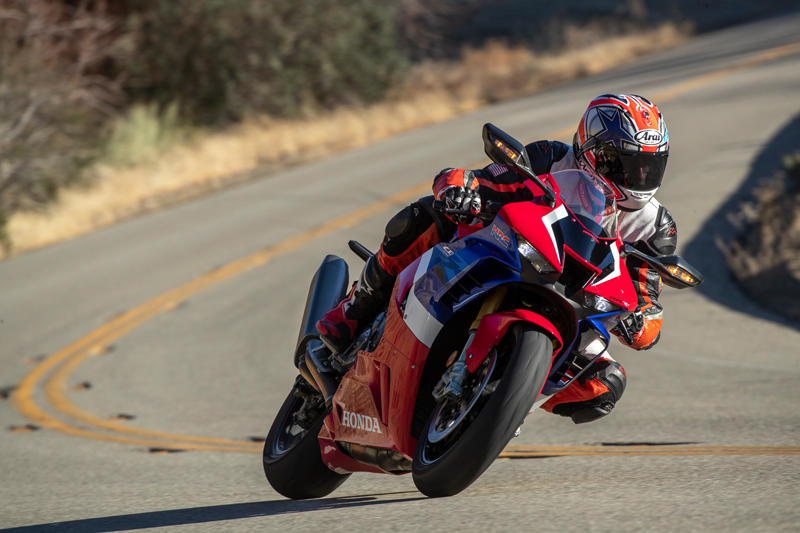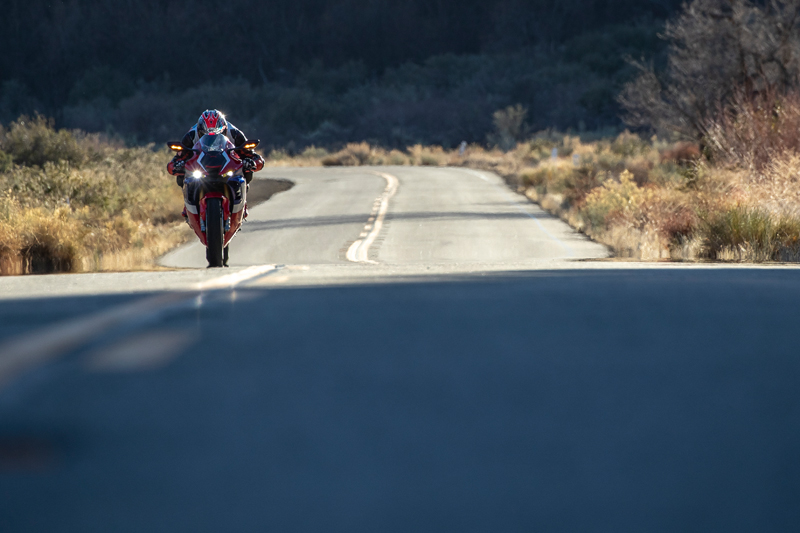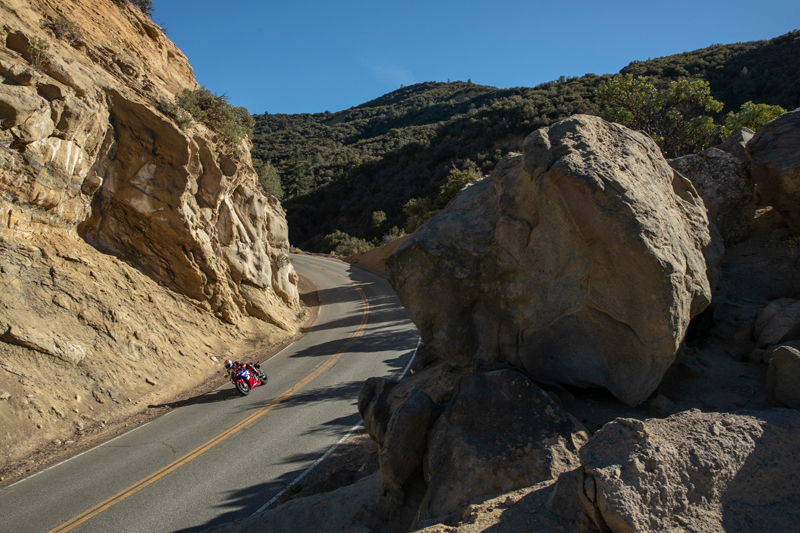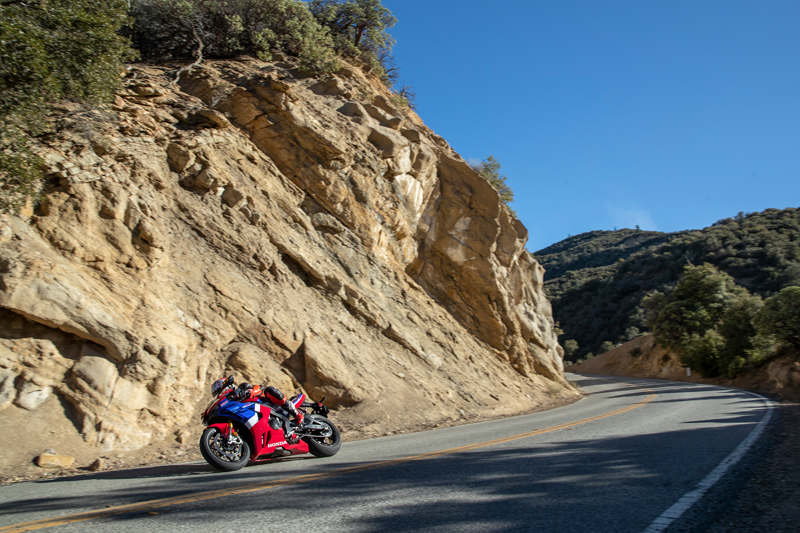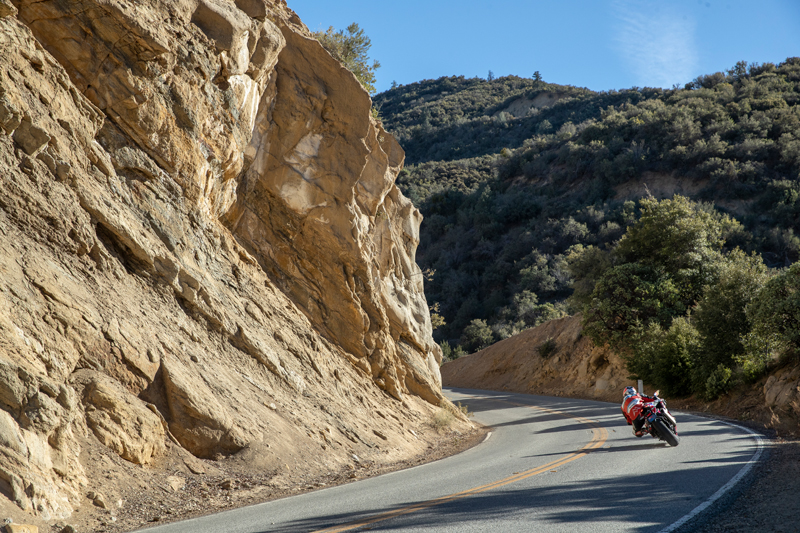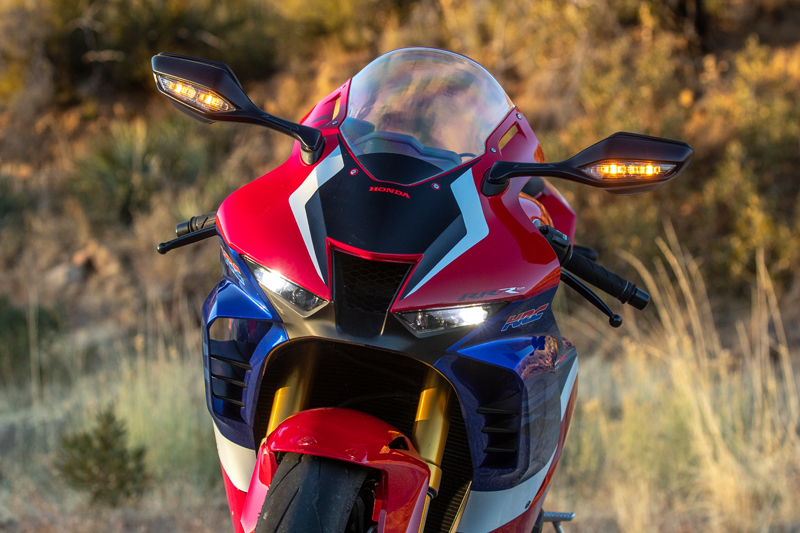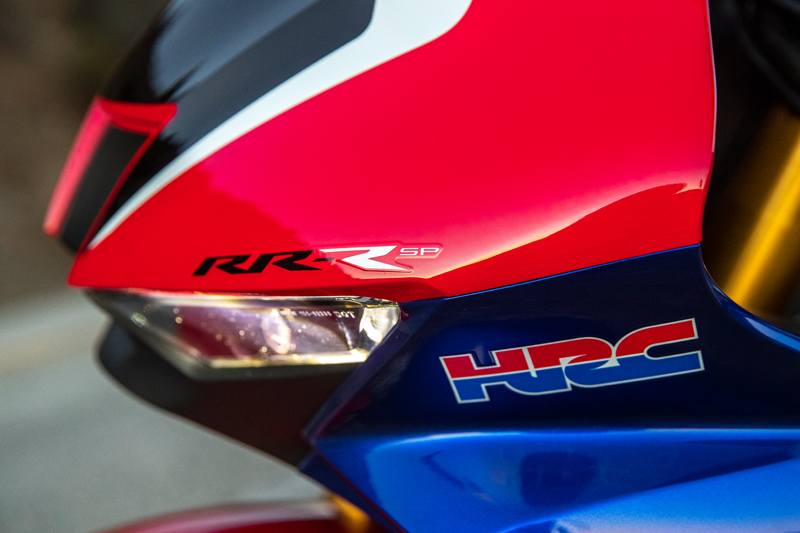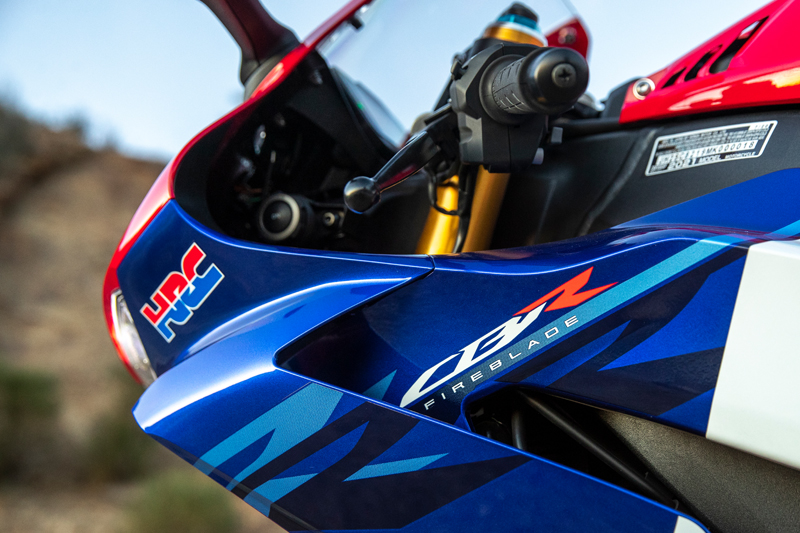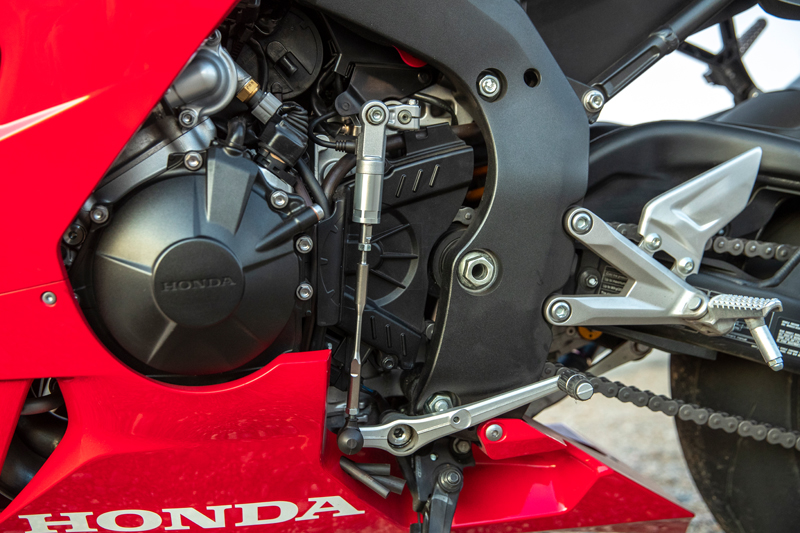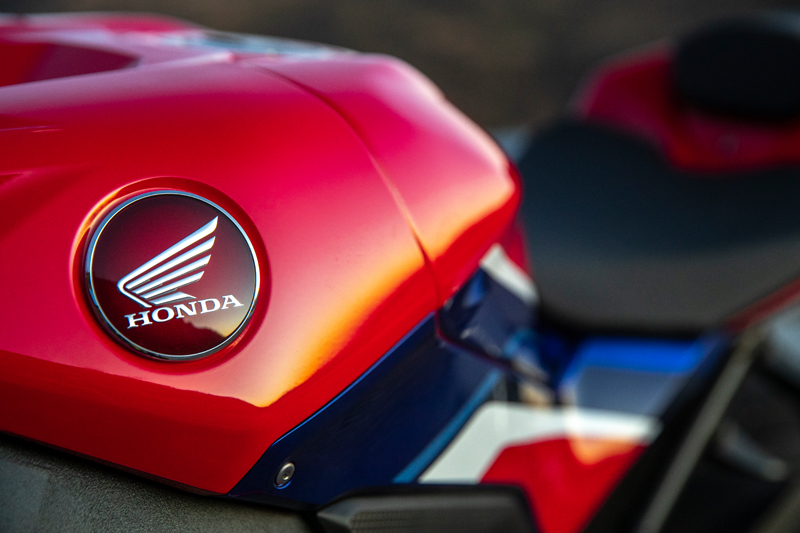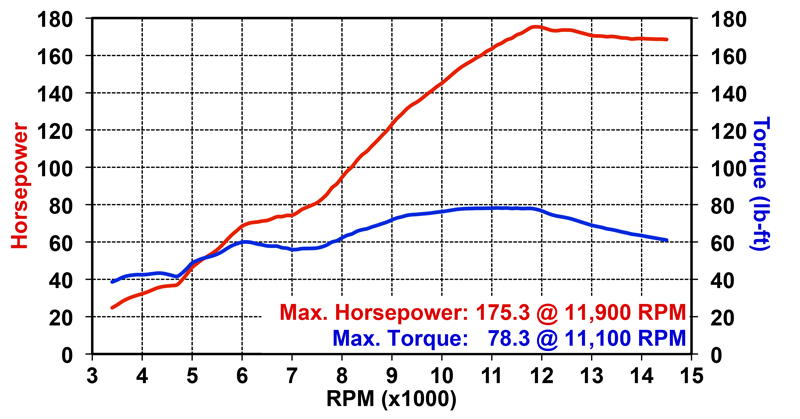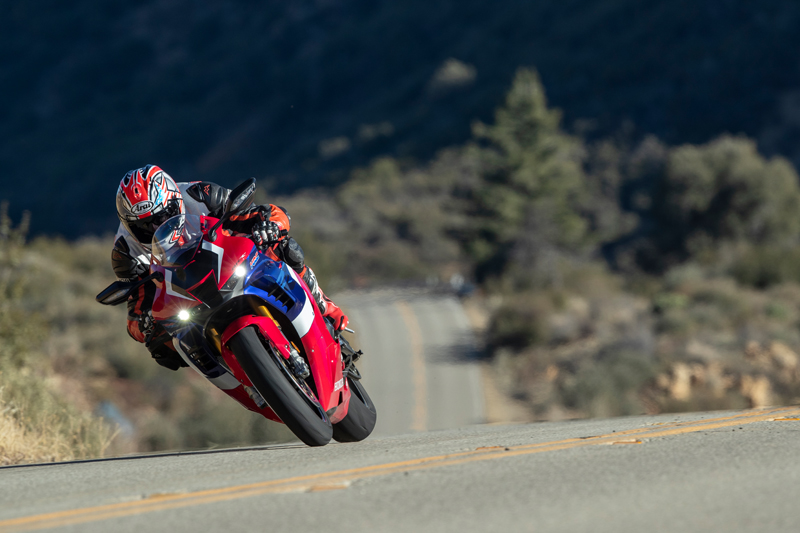
There is no place like the paddock. When the lights are about to go green, the tension in the air is palpable, cut only by the stinging scent of spent race fuel. At the center of it all are steely-eyed racers going through their pre-race rituals, diligent crew members swirling around them like electrons orbiting a nucleus. Nothing else compares, but when rolling out of my suburban garage aboard the 2021 Honda CBR1000RR-R Fireblade SP, I can almost hear the grandstand cheers before gridding up in the canyon.
Since the debut of the CBR900RR — a bike known as the FireBlade in Europe and other markets — in 1992, we’ve come to know Honda’s superbike lineup through its ever-consistent qualities. A CBR is approachable and well-behaved. A CBR flirts with the horsepower chase but doesn’t go for broke. A CBR balances outright racetrack performance with real-world practicality.
This CBR breaks that mold.
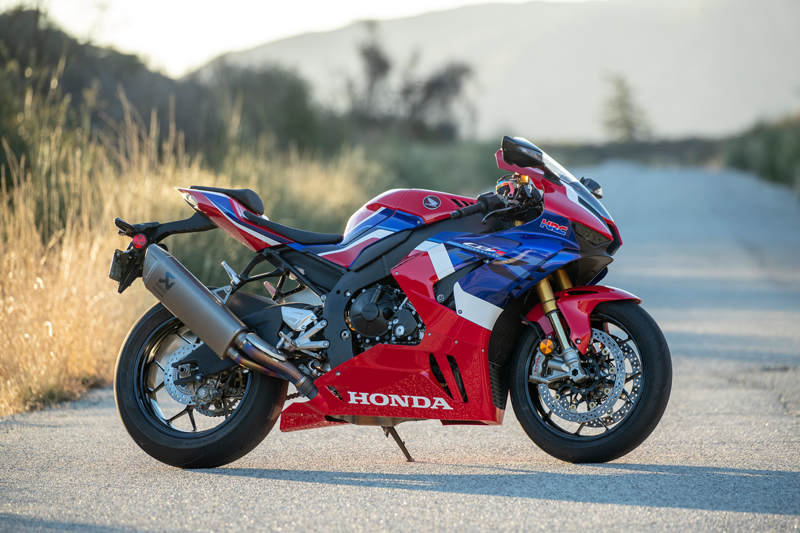
Well-mannered motorcycles seldom make racing history, and the CBR1000RR-R Fireblade SP was developed with one uncompromising goal — win at all costs. It follows in the footsteps of Honda’s other road-legal homologated racebikes like the legendary VFR750R RC30 and RVF750R RC45, machines bred specifically for the World Superbike Championship. And for sportbike enthusiasts, the new triple-R — known as the “pirate” bike in some circles because of all those Rs — is not only supreme wish fulfillment, it represents a fundamental shift in design philosophy, abandoning the longstanding road-bike first, track-bike second approach the CBR is known for.
The new ’Blade is sharper in every conceivable way, a point made crystal clear when you take to its saddle. Compared to the previous-gen CBR1000RR, the seat height has been raised, the rearsets are higher and further back for more ground clearance, and the clip-on handlebars are lower and wider, making it feel like a racebike right off the showroom floor. The reasonable seat-to-peg ratio of the past is, well, a thing of the past. Even the fuel tank is whittled down, allowing riders to tuck in behind the shallow bubble. I get the message: head down, elbows out, go!
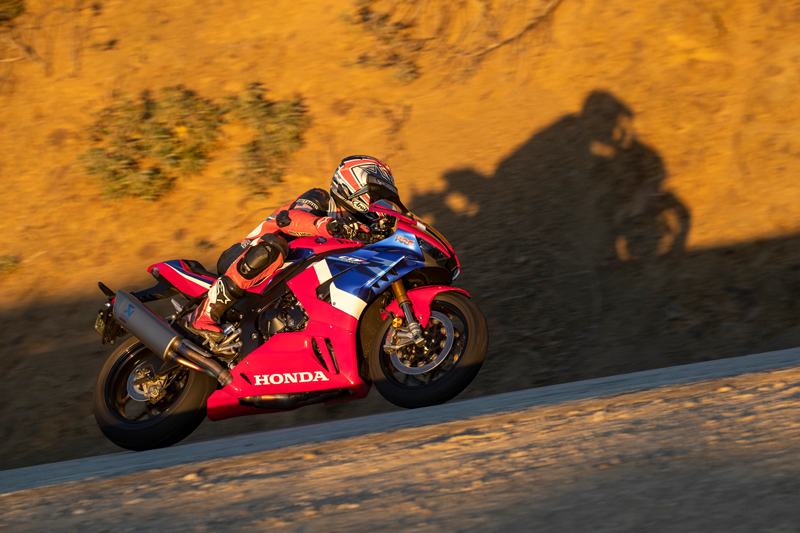
Honda hit the reset button in terms of engine design, opting for a high-revving, big-bore, short-stroke architecture inspired by the $184,000 RC213V-S MotoGP replica. If it works for Marc Márquez, it’ll work for you and me. Coupled with a low-inertia finger-follower valvetrain, lightweight titanium connecting rods and forged aluminum pistons, Honda has created its most virile, fast-revving 999cc in-line four yet.
To do so, Honda tapped key members of its HRC MotoGP program to aid development, instilling this machine with the kind of ferocity needed to compete in WSBK. There isn’t much low-end to speak of, and the SP is deceptively tame below 7,000 rpm. Above that, however, when the barn door is thrown open and the Akrapovič exhaust valve yells giddyup!, the Fireblade takes off, galloping at full speed toward its 14,500-rpm redline. And it does so with uncanny smoothness and linear control.
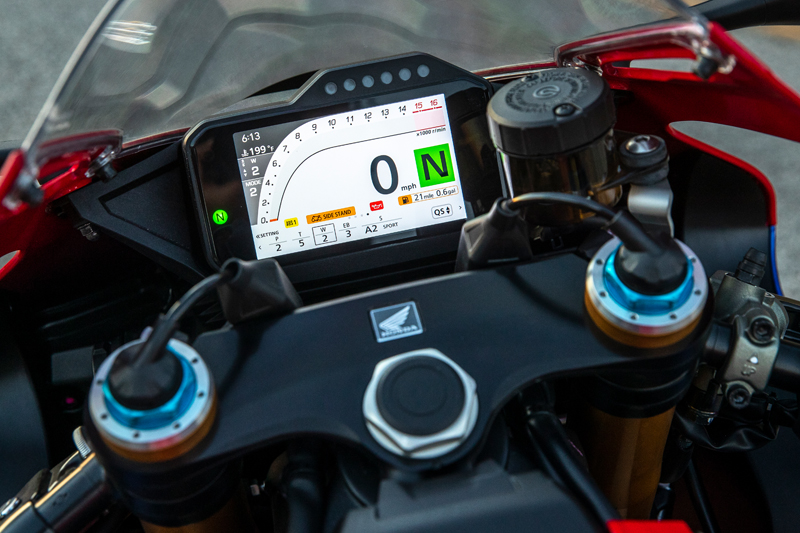
Here in the States, the triple-R’s bottom-end has a few flat spots and its top-end gets strangled above 12,000 rpm in an effort to meet noise and emissions regulations, as you can see in the dyno chart. While the rear-wheel output recorded on Jett Tuning’s dyno — 175.3 horsepower at 11,900 rpm and 78.3 lb-ft of torque at 11,100 rpm — are nothing to sneeze at, especially on public roads, the Fireblade SP is capable of much more. European-market bikes exceed 200 horsepower all day long. Nonetheless, all who pilot the CBR will be helpless to its siren song, its opening notes played by the ram-air induction howl, each gear shift — facilitated by one of the best up/down quickshifters I’ve ever used — speeding up the tune as it reaches a shrieking Akrapovič exhaust apogee. Glory be thy name.
The triple-R’s 5-inch TFT display gives quick access to a bevy of electronic aids, helping you keep all those ponies in check. Led by a 6-axis Bosch IMU, engine power, engine braking, traction control, wheelie control and suspension modes can be altered on the fly. ABS fiddling requires a dive into the menu. While the street is no place to test the limits of traction control or ABS, my first spirited canyon ride was enough for me to judge that Honda has made great strides here. The throttle-by-wire connection is superb, and the rider aids quietly work their magic while exploring cold, unforgiving mountain roads.
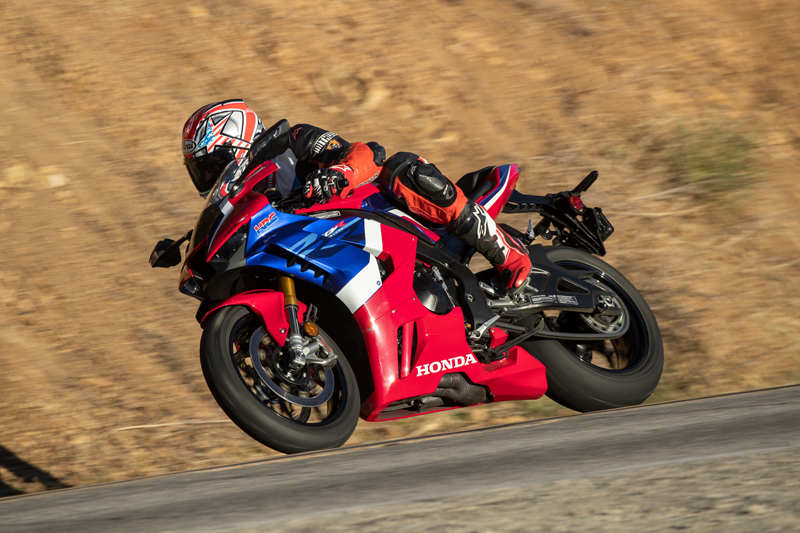
Tying the bits together is an all-new twin-spar aluminum frame and swingarm that has been agonized over by Honda engineers. In a hunt for improved rider feedback, the frame has more vertical and torsional rigidity but less horizontal rigidity than the previous CBR1000RR. The swingarm is over an inch longer and uses 18 different wall thicknesses to tune flex just so. That’s only the tip of the geometry iceberg. With a 2-inch longer wheelbase, increased rake and lengthened trail figures, it is stunning how Honda maintained most of the CBR’s quintessential agility while adding a heaping dose of horsepower-taming stability, achieved in part by raising the bike’s center of gravity. The crankshaft now resides higher and further away from the front axle, evening out weight distribution and giving the rider more leverage for quick transitions. Taken together, the whole chassis translates feedback to the rider telepathically. Whipping the Fireblade through corners is intuitive, requiring just a hint of extra effort than on previous iterations to achieve handling precision.
Öhlins semi-active suspension has become the gold standard on top-tier sportbikes, and it is a huge asset on the Fireblade SP. A 43mm NPX Smart EC 2.0 gas-charged fork and TTX 36 Smart EC shock offer three automatic damping settings (Track, Sport and Rain) and three manual damping settings. With each passing year electronic suspension gets better and better, and it shines on the inconsistent tarmac common on the street, keeping the contact patches in contact while keeping the chassis dead-nuts stable. The Track setting will rattle your fillings loose on anything but the smoothest roadways, but Sport is Goldilocks perfect, gobbling up irregularities and giving you confidence to pitch the CBR deep into corners before twisting the throttle and letting the grippy Pirelli Diablo Supercorsa SP tires do their work.
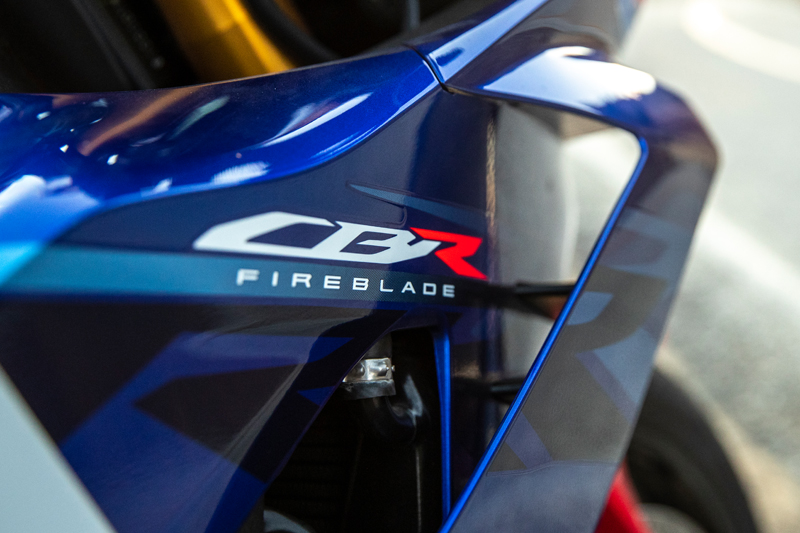
Tweaking the suspension settings is done via the Objective Based Tuning Interface (OBTi), which breaks the terminology down to what you need your bike to do instead of technical jargon. Fork feels squishy? Dial-in Front Stiffness. Squatting too much on exit? Crank up Rear Stiffness. And the list goes on. Those who prefer old-school analog suspension can use the fixed-damping manual modes, adjusting compression and rebound from the dash.
What all of this means is that the CBR can accelerate harder off the apex and blitz down straightaways faster than ever before, necessitating Zeusian-levels of braking performance, brought to you by topflight Brembo Stylema calipers and massive 330mm rotors.
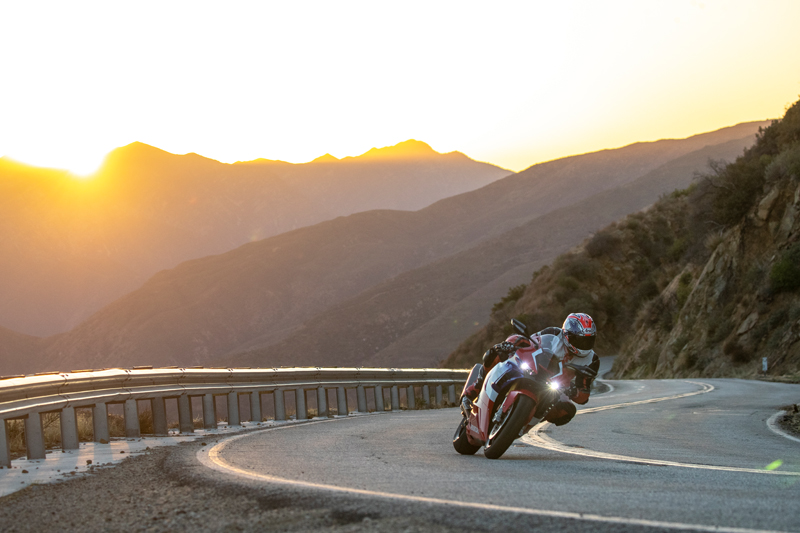
At $28,500, the triple-R’s price tag seems more fitting of moto-exotica hailing from Europe, but then again it’s a bargain compared to the six-figure RC213V-S. What you get is a remarkably well-sorted, top-of-the-food-chain sportbike that was designed to do one thing in particular: go to WSBK and bring home the bacon for Honda. From the integrated aerodynamics to the raging engine and new chassis design, everything here exists because racing demands it. It is highly specialized and very special, and that comes at a price. But this is still a Honda, and the Fireblade SP is a street-legal motorcycle that is available at your local dealer.
After lapping the canyons until the sun dropped behind the mountains and the fuel light called me home, I could only admire the progress that Honda has made since the first CBR900RR/FireBlade revolutionized the liter-class sportbike segment nearly 30 years ago. The triple-R is undoubtedly the most aggressive Fireblade yet, and what many have begged for over the years. Importantly, it retains the rideability that we’ve come to expect from Honda, albeit with extra edge to cut into the success of its competitors on the world stage. The roar of a cheering crowd might be in my head, but that’s all I hear when hitting the starter.
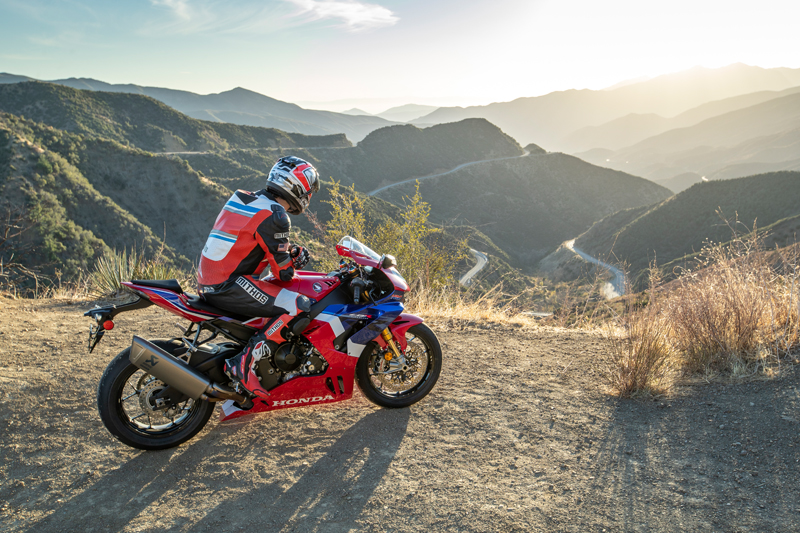
Gear:
Helmet: Arai Corsair-X
Gloves: Alpinestars GP Pro R3
Suit: Mithos RCP-18
Boots: Alpinestars Super Tech R
2021 Honda CBR1000RR-R Fireblade SP Specs:
Price: $28,500
Warranty: 1 yr., unltd. miles
Website: powersports.honda.com
Engine
Type: Liquid-cooled, transverse in-line four
Displacement: 999cc
Bore x Stroke: 81.0 x 48.5mm
Compression Ratio: 13.0:1
Valve Train: DOHC, 4 valves per cyl.
Valve Insp. Interval: 16,000 miles
Fuel Delivery: PGM-FI w/ 52mm throttle bodies x 4 & throttle-by-wire
Lubrication System: Wet sump, 3.2 qt. cap.
Transmission: 6-speed, cable-actuated assist-and-slipper wet clutch
Final Drive: O-ring chain
Chassis
Frame: Twin-spar aluminum frame w/ aluminum subframe & swingarm
Wheelbase: 57.3 in.
Rake/Trail: 24 degrees/4.0 in.
Seat Height: 32.6 in.
Suspension, Front: 45mm USD fork w/ electronic control, 4.9 in. travel
Rear: Pro-Link shock w/ electronic control, 5.6 in. travel
Brakes, Front: Dual 330mm discs w/ opposed 4-piston radial calipers & ABS
Rear: Single 220mm disc w/ 2-piston floating caliper & ABS
Wheels, Front: Cast aluminum, 3.5 x 17 in.
Rear: Cast aluminum, 6.0 x 17 in.
Tires, Front: 120/70-ZR17
Rear: 200/55-ZR17
Wet Weight: 444 lbs.
Load Capacity: 365 lbs.
GVWR: 809 lbs.
Performance
Fuel Capacity: 4.3 gals.
Fuel Consumption: 29.7 mpg
Estimated Range: 128 miles
Indicated RPM at 60 MPH: 4,250
2021 Honda CBR1000RR-R Fireblade SP Photo Gallery:

